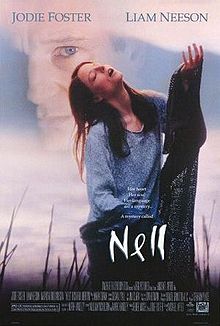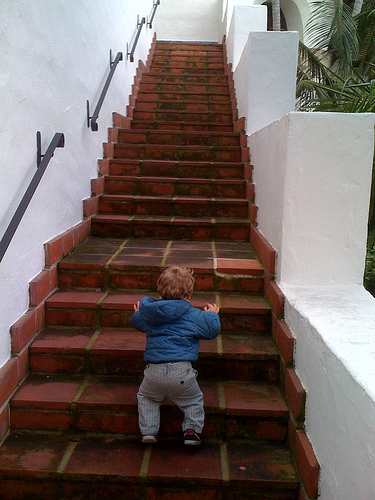Hold Back the Back Story
Because I read hundreds of first chapters of novels a year as a writing coach, contest judge, and copyeditor, I’ve been compiling my list of essentials for a first scene.
When you think of all you have to accomplish in the first few pages of a novel, you really understand how writing a great first scene requires numerous hours of study, practice, and concentration. It takes examining successful, long-lasting novels to see how that first scene was constructed.
Have you ever read a first chapter that took your breath away? Made you cry? Shocked you? If you can accomplish an emotional reaction in your reader that quickly—hopefully by a quick attachment to your protagonist—half your battle is won.
Without sending you into cardiac arrest by listing nearly twenty important items you need in that first scene, I’m going to concentrate on some important ones—the ones that really need to be considered. Some of them are essential “do nots.” And the first one you may already know (but often feel so tempted to fall back on): No back story.
Take a Backseat, Back Story!
Okay, we’ve heard that forever. But it’s true. In order to start your story with a punch and draw your reader in, you need to construct a scene happening right here and now (or with something in the past, like a historical, right then and now).
Regardless of the semantics here, you get the point. Some writing instructors say things like “no back story in the first fifty pages.” Some editors will be so bold as to say they would be happy if they saw NONE in the entire book. Maybe that won’t quite work for your book, but it’s sad to say that countless scenes start with a line or two in the present, and then, whoosh! There you are reading about the character’s early life or marriage or something she did right before the scene started. Which should make you ask . . .
Are you really starting your story in the right place? More often than not, the answer is no. That’s what second and third drafts are for—throwing out your first scene or two.
At Donald Maass’s Breakout Novel workshop, he commented that a good number of novel submissions he reads should really be starting with chapter three or four. He noted that a lot of beginning writers spend ten, twenty, or thirty pages just “setting up” the story by explaining a mountain of information they think the reader must have before the story can actually be underway.
In an exercise he had us do, we went through the first thirty pages of our novel, removed every single instance where we used back story or informative narration, and then chose only three brief sentences containing a “back story fact” we felt we really must include in the opening chapters so the reader would “get” the story.
These three sentences were conveyed by the protagonist in dialogue to another character (forcing us to avoid narrative and share back story via dialogue, which is usually the best way to do so). Needless to say, when asked, we students all agreed our novels read much better without the back story, and we had indeed learned our lesson.
So think about weaning yourself off the need to explain—or as it’s put in writer’s circles: RUE: Resist the Urge to Explain. Your readers aren’t dumb—really! They don’t need you to explain everything, and they actually enjoy a mystery and being allowed to start figuring out the puzzle you are presenting.
Most of the books I read and edit don’t “get going” until page twenty. All that up-front explaining, narrative, setting up the scene, etc., was all great back in Dickens’s time (A Tale of Two Cities, for example).
But we don’t do that anymore. TV, movies, and video games have changed the modern reader’s tastes and they want cinematic writing. Sol Stein in his book Stein on Writing says, “Twentieth-century readers, transformed by film and TV, are used to seeing stories. The reading experience for a twentieth-century reader is increasingly visual. The story is happening in front of his eyes.” This is, of course, even more true in the twenty-first century.
A Better Way
So how do you avoid the dreaded info dump and back story?
Think about the emotion, feeling, or sensation you want to evoke in your reader. You want to put them in a mood right away. You want to be specific to generate that mood, which means bringing in all the senses and showing your character in the middle of a situation, right off the bat.
And that’s the next essential element: establishing immediately (did I say immediately?) the drives, desires, needs, fears, frustrations of your protagonist. Not only do you need to show her in conflict, in the midst of an inciting incident, but you need to reveal her heart, hint at her spiritual need, show her vulnerability, and what obstacles are standing in her way.
In the first scene? Oh yes. Yes. And that’s where we’ll pick up next week. I’ll clue you in on the three most crucial things you must know about your character and must hint at in the first scene.
This week, go through your first scene and take out all the back story. If needed, come up with only one or two lines that tell a little important information you think the reader must know and use those in dialog, if possible.
Then read your scene over and see how much better it is. Then post here in the comments what you think about the revision.












Your advice is sound. Of course, you can always find exceptions to your advice in “good books.” e.g., The Great Gatsby. But writers should take heed of what you’ve said. I would like to add some additional perspective on this.
The issues of too much backstory might also be posed as the inclination for the writer to include too much exposition. Backstory presented in a present moment-like scene, replaying the action as though it were just now happening can avoid the deadening drone of exposition in telling the backstory. So I submit a conjoined issue here is exposition versus action. Readers are much more attracted by action. When telling backstory, relate it in action scenes.
I love that book, Writing The Breakout Novel, by Donald Maass. It really encourages me to dig deep into my characters motivations and fears. I have the workbook too.
Sound advice. It is easy to find ones self down a blind alley. I have been struggling with the beginnig of a new short story, trying a new typic area has caused issues. I have been through several re writes. But now I think I may have a way forward. Thanks.
Now-a-days, giving Back Story in the beginning is thought as an old fasion. Back story is normally given after some current scenes as FLASH BACK as is told now-a-days.
Though in the case of SUSPENSE STORIES, where reader’s attention is to be drawn since beginning itself, there may be two or a group of Characters shown fighting physically or quarelling with very hot words, blaming each other for doing (or being a part of some group doing) some serious harm or some SCANDAL against the other group or some people. So that it becomes self explanatory, to carry on further dialogues for bringing that suspense to LIME-LIGHT, by which the reader or Spectator is attracted and attached to story.
A lot of water has coursed under the literary bridge since The Great Gatsby was written. Scott Fitzgerald was working in a very different environment – the industry has evolved into a monster whose tentacles can strangle talent easily.
A canny writer keeps up with commercial trends AS WELL as attempt to be significant with their prose, emulate the greats, and turn out something that reflects the current state of the human condition so that the work lives on.
And yes – you’ve got it. Weaving exposition in and out of the action gives the reader a balance that’s digested pleasurably.
What a lot we must do when considering a novel! Not only must we turn a gift into a talent through judicious training and learning, but we must also keep an eye on the industry while we do our thing. Not easy… Chuck is right.
We all know who Chuck is, right?
I’m unpublished, newly devoted to writing the novels I’ve always wanted to write, and loving every moment of this endeavor. Thank you so much for sharing your expertise! An appealing character strives against great odds to achieve a worthwhile goal. In setting up the opening paragraph of each novel I think it’s important to “hook” the reader by introducing a strong emotional response with just a hint of that appealing character to entice him or her to read further. That takes an enormous amount of work!
The back story discussion is very interesting and timely for me as I’m starting to rewrite the novel I have been working on, although I do tend to write and re-write as I proceed through the manuscript – 130,000 words at this point.
My current draft includes back story as a way to foreshadow future events and to provide a sound basis of character motivation. So, even though I enjoy books that do use extensive back story, I see the trend changing. Much of my back story is action driven with dialogue, and I had started the book with a scene as to what was going to happen, and then switched to the back story.
I can see now I need to change that around a bit, and I can, as suggested here, start my story several chapters forward and simply enter the character’s life earlier with some action type of event, and then insert back story lines (perhaps as flashbacks) as needed in these current scenes.
It’s not an easy thing to do as it’s critical in my story to know the family history and motivation that got them where they are. The question is, is it permissible to, say after 50-75 or 100 pages, to actually slip in a chapter that provides the back story, and solidifies the motivation aspects of the characters?
Ron
From what I’ve heard in talking to agents and acquisitions editors, you need to really avoid any flashbacks or extensive exposition about the past in the first thirty pages. I have heard people describe it little sprinkling seasoning throughout your scenes and I like that. When I need to tell some back story, i do so a line at a time, in a character’s head or through dialog, enough to tease and raise curiosity, but not too much. Readers like to piece things together a bit at a time. It adds microtension and interest as a character’s story and past unfold along the way. I believe you have a stronger and more engaging book if you go this route rather than write pages of information you think the reader must know to understand the book. You may want to avoid writing a whole chapter that is back story or a flashback and instead have the character remembering while in the midst of present action in a scene. I feel further into the book you can get away with it because by then you should have hooked the reader and she cares and knows your character enough by now to want to start exploring his past.
Thank you Susanne for a block of exceptional ideas.
Una Tiers
cslakin hit it right on. Sprinkle the backstory throughout the story, giving the reader only dribs and drabs as she goes; no reader likes to be spoon fed.
I would warn, however, against the other trap, which is coming toward the climax of the novel and realizing there hasn’t been enough backstory, and filling it in in the end. There is no story worse than the one where the bad guy isn’t introduced until twenty pages from the end. Leave the reader with a big ‘why did I bother’ taste.
Drizzle it in naturally. Let your characters fill it in as their personalities dictate. Don’t force it. But keep a steady stream throughout. You’ll have your reader hooked again and again.
I’ve been working on rewriting my first actual novel, and I have to say that while I agree that you must cut out all the back story when you edit and rewrite chapter one, I don’t regret all the backstory I wrote in my first draft. Even if it will never reach the page in the final, published book, writing the backstory up front has helped the rest of my book be consistent and more convincing. Sometimes an author can accomplish this by extensive pre-writing, but I think the writer should feel free to write as much backstory as they want in their rough draft—as long as they’re prepared to use the metaphorical red ink and scissors when they rewrite.
You may find in time it is much more time-saving and trains your writing skills to write all the back story down in a separate document. Then when you go to write your novels, you draw from the pages you’ve written on every character, for you should know them inside and out. I’ll be going over character development in depth in upcoming posts, but I’ve found after writing twelve novels that if you do all that homework first, before you write the novel, and plot out your story well, you will know just when to put in those bits of back story in just the right places. Why waste time writing something you know you will just cut out? It’s really a waste of time and effort, and putting all that in a doc you can refer to makes it handy the whole way through writing the novel.
This is a wonderful blog. I am enjoying every word -both the valuable tips, and the feedback. I especially relish the extremely valuable suggestion of placing all back material in a separate folder.
Thanks.
Batya
There are two practical reasons why you should avoid back story: 1) If your reader is like me, he won’t remember 90% of the details. 2)If your reader is like me, he will enjoy building the scenes on his own, with just a little help from the author. Leave something for your reader’s imagination!
I have just taken the back story out of one of my my first chapters and it has just lost all the drag that was worrying me. I haven’t yet deleted it. It is marked in green. I might be able to drop bits of it into other chapters. It took about two thirds of that chapter out and it is a lot snappier.
It was like taking all the stodge out of a meal and just having the good stuff. Or not having to walk on the roads to get to the mountains for that wonderful view.
Thinking about this later I realized that the information had been useful to me for character development at the first draft but really not needed by the reader. You are so right.
Thank you.
One good suggestion is to cut and paste all the back story into another document. Then as you go through your scenes, you can find places to sprinkle in bits to add some richness, but only a little at a time. This works very well. I write extensive histories for my characters on many pages. As I write the novel, I will just cross off parts in my notes that I have inserted so that by the time I’m done with the novel, everything I feel that is interesting and necessary to reveal has been included. I like to work longhand on lots of paper and will often take a break from writing and read through all my notes. This method has worked great for me for all my books.
I like to start right in the middle of some kind of action. But you are also very right to point out that you need to make an emotional connections a.s.a.p. I was recently told by a reader that the end of my first chapter made her cry. I had to smile.
CS, what do you think about prologues and how they fit into this topic? If the prologue hooks the reader, can the 1st chapter have some back story (I’m not talking a lot)?
KC, there are always exceptions to the rule. Many writers successfully use back story right off the bat. Prologues are mostly used for that. Why back story is so often frowned upon is that amateur writers mostly use it because they feel the need to dump info at the start to clue the reader in to all the details of the premise and are worried if they don’t, the reader won’t get the story. But a proficient writer will not need the dreaded info dump. He can get the story going in real time, with the character in action, and gradually reveal all the necessary details as he goes along. Donald Maass in his breakout novel workshop suggested we cut and paste all the back story in a separate document and then only put in a few little bits in the first few chapters, and either in dialog or some other simple revealing way that avoids back story or narrative. That’s what I try to do. I sometimes have a prologue to set the stage for a novel but often do it as a foreshadow, such as a frame structure (where you play part of a later, significant scene in the book–very commonly done in movies), or a teaser to hook the reader. I think the first scene should have little glimmers of back story–just enough to add microtension and curiosity. You want your reader drawn in and wondering “What happened to bring this character to this point in her life?”
OMG! I know that this blog has been here for a long time, but I have just discovered it and have just deleted my whole first chapter and a few paragraphs of the second. I had changed it not long before I self-published it so that it was full of backstory instead of the action I had originally started with.
A lot of people have downloaded samples on Smashwords, but not purchased the book. I can see clearly now what the problem is. I will re-release my book as soon as I have sprinkled the backstory into it.
I can’t thank you enough!
I’m glad my posts are helping you with your writing, Susan. Be sure to follow the new course I have on the blog to learn more about setting up your structure.
Hi,
I just discovered your blogs and am learning so much and look forward to applying your suggestions and techniques to my writing. I am wondering if the information in this Heart of the Story blog pertains to fiction and non-fiction alike. I am writing a memoir and looked at the book referenced by Donald Maass and saw that it is for persons writing fiction. Does it really matter when developing all of the parts of the story and the final result? I’m wondering if I can still utilize the suggestions for my writing.
Thank you,
Nicole
A lot of memoir writers use a kind of creative nonfiction technique, which is similar to fiction: reenacting scenes in their life story. So all that info can be helpful.